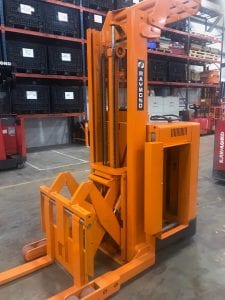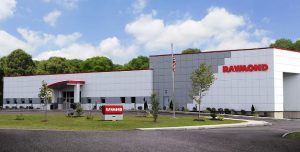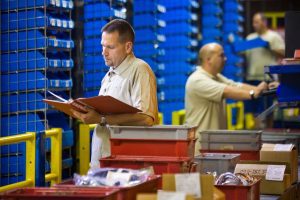There are plenty of old model forklifts out there doing work that isn’t too hard and do the job just fine…until they

The top three forklift manufacturers 40 years ago used to tout large piles of parts stocked for each model for 20 years to support the aftermarket needs of their clients. This was especially true for the larger and more specialized lifts that were expected to last 20 years.
Who’s Got Parts?
The lower tiered manufacturers made no such claim and had no such support, and we would often see “not so old” forklifts broken down, unrepairable because parts were no longer available, or if they could be found, it would take months to get and cost more than they should. One or two of these breakdowns and the warehouse manager would just give up. It wasn’t about finding a mechanic that can diagnose and do the repair. It was all about the parts availability.
I don’t know about the other manufacturers but I’m hearing that Raymond has done a good job of maintaining aftermarket parts availability throughout the supply chain crisis caused by the pandemic. That got me thinking about the old days, and how things have changed.
Stock Up
The current models of forklifts haven’t changed much since 2008. The newer electronics keep getting better, but many of the manufactured components have stayed the same. Forklift manufacturers design the lift, weld the steel together and bolt on the components. Many of those components have improved as time goes on, but typically are backwards compatible. The steel, well, it’s steel. Warranted for five years, expected to last twenty in lighter applications. The growing equipment base in the field and commonality in parts makes it easier for aftermarket organizations to keep stock on hand. Service accounts are lost if an organization cannot supply the parts that are needed in a timely fashion. I haven’t seen this problem for years, but back in the day it was a big talking point.
The manufacturer wants to get trucks out the door as fast as possible. What if a certain component that fits both new and old is in short supply and needed in the field? Do you make the new forklift and the client wait? Or is it the other way around?
Take Action
Raymond, looking forward into the storm, was quick to boost production and improve parts availability. For the latter, they added invested millions of dollars in safety stock

As far as production capacity goes, Raymond has been and is still making huge investments. They’ve added machine tools, people and processes and are now producing more trucks than ever, despite the lingering labor and parts availability issues from Covid. Raymond also utilizes the Toyota Production System (TPS) to make improvements in material flow and manpower productivity, leading to improved morale and optimized processes.
Moving Forward
To ensure you are covering your vendor selection bases, these are questions you need to ask any

- Will the part I need be available when I need it?
- What resources do you have to support me should a component shortage become an issue?
With two-year lead times on Reach trucks and Orderpickers from the US market leaders, you may be tempted to try the “new” forklift manufacturer. Some local dealerships are taking on new overseas lines just to have forklifts to sell. Some of the foreign manufacturers are capturing orders where they couldn’t before.
Don’t do it. You’ll end up with a dust collector, or worse, a large bill to pay for overnight shipping from overseas, and a rental bill to keep things moving for the days/weeks/months that those ‘out of the country’ parts will take to get.
Let Abel Womack support your current fleet while your order for a new Raymond forklift is processed. Don’t let the long lead times put you into a position that is worse off than it already is. It’s time to order a new forklift NOW from the manufacturer you know you can count on and will always be there to support you.



Leave a Reply
You must be logged in to post a comment.